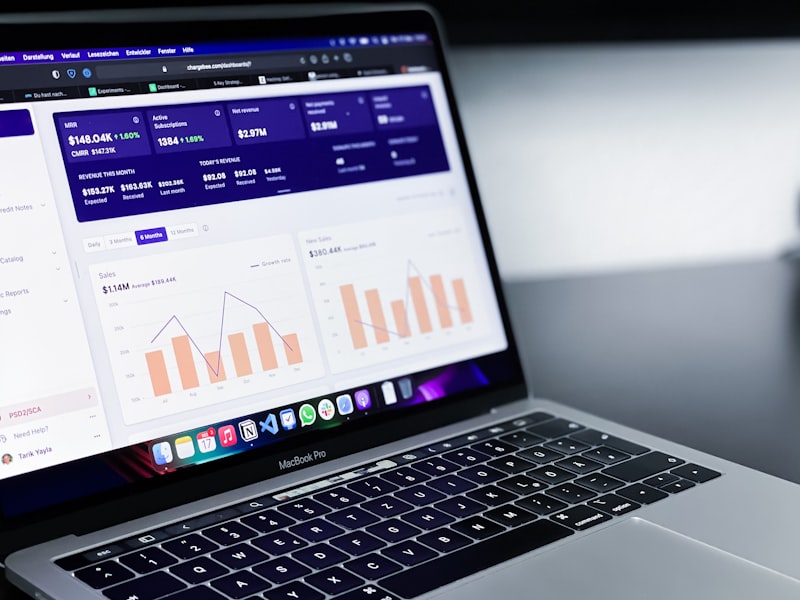"Talk to a few customers, and you have anecdotes. Talk to hundreds, and you have data."
You've done all the work and finally released your product to the world. Your heart is pounding, you can barely breathe. You're so excited for everyone to use what you've made and for them to love it as much as you do. It's a big day!
Then, after a few days, the excitement fades a bit. You're checking your analytics like crazy every hour but there aren't many people using it yet — maybe they haven't found out about it yet? Besides that, no one has left any feedback on it either.
Then weeks go by, and you're still waiting around for feedback. There are some users now, but the only feedback is from your friends who just say things like "yeah, this is cool!" or "it looks good!" or just "nice job." Not very helpful when you're trying to figure out how to make this thing better.
So how exactly do you get people to give useful feedback? And if these are even end-users of your product (or service), then how should the feedback be asked? How do you know what questions will get helpful answers? What if they don't give any feedback at all?
In this post, I'll share my experience in gathering user feedback. Let's get started!
1. Send Surveys at the Right Times
Surveys are a straightforward way to ask your users questions and get quantitative data. But if you send surveys at the wrong times, you won't get thoughtful responses.
Here are some best practices for effective surveying:
Interview Question Framework
| Type of Question | Example |
|---|---|
| Background | Walk me through how you use our product in your daily workflow |
| Positive Feedback | What parts of our product do you find most useful? |
| Pain Points | Where do you experience friction or confusion in the product? |
| Feature Requests | If you could change one thing about the product today, what would it be? |
Send an onboarding survey
The signup flow is the first chance to ask questions. Send a survey immediately after sign up with 3-5 questions like:
- How did you hear about our product?
- What problem are you hoping to solve with our product?
- What else have you tried to solve this problem?
This gives context about your users and their needs right away.
When to Send Different Survey Types
| Survey Type | When to Send | Goal |
|---|---|---|
| Onboarding survey | Immediately after signup | Understand user needs and motivations |
| Net Promoter Score (NPS) | 1-2 weeks after signup, then quarterly | Measure user satisfaction over time |
| In-app surveys | After key workflows and features | Get feedback on specific parts of the product |
Send a net promoter score (NPS) survey
The NPS survey simply asks "How likely are you to recommend our product to a friend or colleague?" on a 0-10 scale.
Send this no more than 2 weeks after sign up to gauge initial reactions. Then send it periodically to measure changing sentiment.
Send in-app surveys
These are short, targeted surveys about specific features or flows. For example:
- After exporting a report, ask if it contained the right data
- After a tutorial, ask what was confusing
- After a purchase, ask how the process could be improved
In-app surveys give detailed feedback where you need it most. Keep them to 1-3 quick questions.
Tip: Offer incentives for survey completion
To increase response rates, offer a small incentive for completing longer surveys like:
- A discount code
- Extension of free trial
- Entry into a raffle
But focus on providing value with your surveys, not bribing participation.
2. Intercept Users With In-App Messaging
Sometimes you need qualitative, open-ended feedback instead of structured survey responses.
In-app messaging allows you to start a conversation and ask follow up questions. Here are some examples:
Live chat
Chat windows allow real-time conversations with users right where they are in your app. Ask open ended questions like:
- What brought you to this page today?
- What task were you trying to complete?
- What part of the process was confusing?
Chats feel personal and let you quickly probe with additional questions.
In-app banners
These customizable banners appear at targeted places within your app. For example:
- After a new feature is used, ask for feedback on it
- On empty states and error pages, ask how users got there
Banners are noticeable yet non-intrusive. Use them sparingly to highlight key moments.
Feedback forms
Simple contact forms can collect focused user feedback. For example:
- On error pages, ask for details about the error
- On billing pages, ask about problems with the process
- On cancellation pages, ask why they're leaving
Forms prioritize feedback from at-risk users. Follow up with outreach for more info.
Tip: Segment your power users
Target in-app messaging at engaged "power users" who are most invested in your product. Their detailed feedback will give you the most insights.
3. Proactively Outreach to Users
For deeper insights, you need proactive outreach to start a dialogue. Here are two ways to do it:
User interviews
One-on-one interviews let you probe into user behaviors, motivations, and pain points.
Reach out to a mix of users and ask open-ended questions like:
- Walk me through how you typically use our product
- What works well for you today?
- What doesn't work well / causes frustration?
- What feature or improvement would make the biggest difference for you?
Plan a 30-60 minute call. Take detailed notes and pull out key insights.
Prototype testing
Have users test early prototypes of new features to get feedback for improvement.
There are two main ways to prototype:
- Mockups: Static screenshots that show new designs
- Clickable demos: Simulate interactions with a prototype tool like Figma
Schedule remote testing sessions and give users tasks to complete with the prototype. Record their feedback as they go.
Tip: Offer incentives for proactive outreach
To get users to give up their time, offer incentives like:
- Cash incentives ($25-50 for interviews)
- Extension of paid plans
- Company swag
But focus on showing users you value their feedback, not just bribing them.
Gathering user feedback consistently and effectively will supercharge your product development and user growth. Use a mix of tactics:
- Surveys to get quantitative data on specific topics
- In-app messaging to intercept users for real-time feedback
- Proactive outreach to build understanding of users and pain points
By continually listening to your users, you'll build a product they genuinely love.
FAQ
1. What are some best practices for creating effective user surveys?
Surveys should be concise, targeted, and timely. Follow these best practices:
Keep core surveys under 5 minutes to maximize completion. Personalize email invitations and say why their feedback is valuable. Prime with a short explanation of the goal and topics. Start with easy demographic questions to ease into it. Use a mix of open text, scales, multiple choice to allow detail. Ask one question at a time, be specific, avoid double-barreled questions. Funnel from broad to specific questions. Use rating scales consistently (e.g. 1-5, never to always). Close by thanking users and stating how feedback will help.
2. What techniques can increase user survey response rates?
There are several proven techniques to boost survey response rates:
Keep it short and focused - long surveys see huge drop off. Send follow-up reminders to non-responders after a few days. Make it mobile friendly so it's easy on any device. Explain up front why their input is valuable to your team. Allow partial completion to get answers if they abandon it. Incentivize with discounts, deals, early access, etc for completion. Send at optimal times based on usage patterns. Use personalization in questions and email copy.
3. What are some best practices for conducting effective user interviews?
The key to good interviews is asking meaningful questions in an unbiased way:
Build rapport at the start with background questions. Cover both positive feedback and pain points. Ask mostly open-ended questions, avoid yes/no. Use "tell me about" phrasing to get narrative responses. Don't lead people to respond a certain way. Use "what," "how," "why" probes to go deeper. Request examples and specifics to understand behaviors. Wrap up with "what should we have asked" to surface unseen areas.
4. How can you determine the right users to include in qualitative research?
Focus qualitative research on these key user segments:
New users - crucial for first impressions. Power users - heavy usage means detailed feedback. At-risk users - pinpoint problems driving churn. Expert users - give deep insights on complex workflows. Premium users - invested customers with unique needs. Enterprise customers - understand needs of key accounts. Industry verticals - each vertical has unique needs. Competitor switchers - understand their motives and barriers.
5. What are some ways to incentivize users to participate in interviews and usability testing?
Some incentives to offer users for participating:
Cash incentives - $25-100 for an hour interview or test. Product credit - e.g. free month of a SaaS service. Charitable donations made on their behalf. Company swag - tshirts, mugs, bags. Gift cards - Amazon, Starbucks, etc. Entry into giveaways - raffles for larger prizes. Early access to new features or products. Public recognition - thank them by name on social media.
The incentive should reward their time and be clearly communicated upfront.
6. What metrics are most important for evaluating survey results and feedback data?
Focus on these key metrics:
Completion rate - the % of users who finished the full survey. Drop-off rate - where users abandoned the survey. NPS score - net promoter score, likelihood to recommend. Satisfaction - rating scales on overall satisfaction. Key drivers - statistical analysis of drivers of satisfaction. Benchmarking - compare results to past surveys and targets. Verbatim feedback - analyze open text for themes and quotes. Operational metrics - connect feedback to business metrics.
7. What are effective ways to share user insights and feedback with stakeholders?
Make sure feedback is actionable by stakeholders:
Create a feedback highlights deck with top themes, user quotes, and insights. Build a public-facing feedback community for transparency. Run insight workshops to align on implications of feedback. Create user personas based on research to humanize data. Put feedback quotes on internal posters/screens around the office. Invite stakeholders to listen in on user interviews directly. Arm client-facing teams with buyer personas based on research. Embed insights directly into roadmaps and sprint planning.
8. How can you ensure user feedback actually gets implemented rather than just collected?
To drive action on feedback:
Assign clear ownership for acting on kinds of feedback. Set aside regular hackdays to work on feedback items. Create a user feedback backlog with input from stakeholders. Build feedback results directly into product roadmaps. Include feedback tasks in performance reviews. Report on metrics related to feedback response. Celebrate teams and individuals who successfully implement high-value feedback.
9. What are some effective ways to follow up with users who provide feedback?
Follow up with users to show you value their time:
Send a thank you email to every respondent. Share highlights of key findings and actions taken. Follow up via email or in-app messaging on resolved issues. Reach back out to some users to validate implemented changes. Provide incentives and rewards for top contributors. Highlight and recognize helpful individuals. Keep an open channel for further follow up conversations. Share updates on product changes inspired by feedback.
10. How can companies build an ongoing culture focused on user feedback?
These tactics help drive an ongoing culture of user focus:
Set goals and OKRs related to user feedback response. Report on feedback metrics in all hands meetings. Celebrate wins and call out anecdotes of feedback driving real change. Make sure executives do regular user interview rotations. Feature user quotes and feedback widely in internal tools and communications. Support teams with budget and time explicitly for usability testing. Build feedback velocity - how rapidly we can learn and improve. Default to openness by making aggregated feedback public.






